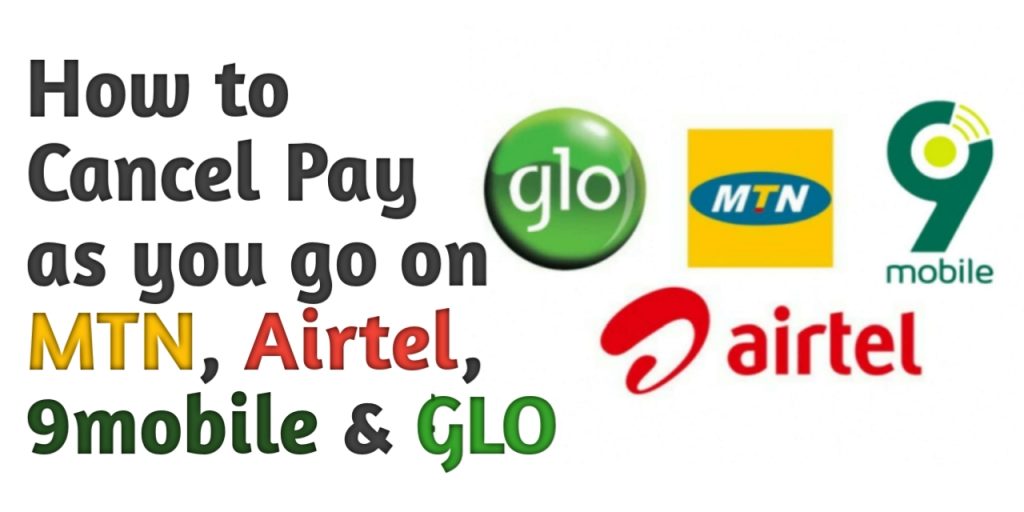Have you ever thought of why your mobile data usage is always on the increase than anticipated? Especially when you’ve just subscribed to a data plan but haven’t used it much, only to find out that your balance has vanished. Many smartphone users often assumed that the fault is from their network providers. But, is it really their fault?

Mobile data has become an indispensable part of modern life, enabling us to stay connected and access information wherever we are. However, managing your mobile data usage wisely is crucial to avoid unexpected overage charges and maintain a seamless online experience.
Before we delve into tactics for optimizing mobile data usage, it’s important to understand what mobile data is, how the various generations of mobile networks, such as 2G, 3G, 4G, and 5G (along with advancements beyond), and how the specification of your handset can impact your mobile data usage. Additionally, we\’ll not only explore the fundamentals of mobile data but also provide valuable tips and insights that will help you maximize the benefits of your data plan.
Are you ready? Let’s discuss…
What is Mobile Data & Mobile Data Usage
Mobile data refers to the information transmitted and received by your smartphone or other mobile devices via cellular networks. This data allows you to access the internet, send and receive emails, use apps, and much more.
What of mobile data usage?
Mobile data usage refers to the amount of data transmitted and received by your mobile device through cellular networks while performing various activities such as browsing the internet, using apps, sending and receiving emails, and more. This data is typically measured in megabytes (MB) or gigabytes (GB) and is a key component of your mobile phone plan. It is crucial to monitor your mobile data usage because exhausting your data plan limits can result in additional charges or slower data speeds.
Related Links:
How to transfer data on 9mobile
how to transfer airtime & data on mtn nigeria
code to transfer airtime & data on airtel
GLO EasyShare, transfer your airtime and data with ease
How (2G, 3G, 4G, and Advancement Beyond) Affect Mobile Data Usage
Let me use an example that I believe most users must have experienced!
Have you used a feature phone (button phone) to surf the internet before, how was your experience? It was an awesome experience right. That is because feature phones can use a 50MB data to browse your favourite sites and still have left over data for the next day. Compare that with the current device you are using, the 50MB doesn’t last a minute.
That your feature phone uses a 2G cellular networks and 2G uses less data to load a web page. This however, leads to slower internet connection and perhaps may break a site with multiple components. For example, images on some sites may not display.
According to a Wikipedia entry,
2G offers a theoretical maximum transfer speed of 40 kbit/s (5 kB/s). And with EDGE (Enhanced Data Rates for GSM Evolution), there is a theoretical maximum transfer speed of 384 kbit/s (48 kB/s).
If we compare the above statement about 2G to advanced cellular networks like 3G, the data transfer speed of 2G is significantly slower. Networks like 3G, 4G, and 5G load web pages more quickly, and utilizes more data to display the full web page with all its features while maintaining the quality of the content on that page. In essence, the higher the cellular network generation, the greater the mobile data consumption.
Trending:
MTN launch 5g in seven Nigerian states
Can Phone Specification Affect your Mobile Data usage?
Yes! Different mobile operating systems may have varying data usage patterns. Some OS versions may optimize data usage better than others. If an iPhone and and an android device is placed at slightly the same condition while streaming a video on YouTube, the iPhone will be found to consume more Data. You can check it out yourself!
Other Activities That Consume Mobile Data
The below are also included in the activities that consume data while using or not using your mobile device.
Ads on Visited Sites
Did you know that advertisements on visited sites also consume mobile data? Yes! Ads and unnoticed trackers consume more data than the original web page content you view. When you visit a website or use a mobile app with ads, it often requests and loads advertisements from ad servers. These ad elements, such as images, videos, and scripts, are downloaded to your device, thus consuming data in the process
Ads are a unique way for web developers are compensated for their efforts; however, some ads can be so annoying that their absence may be required.
Background Processes
Let’s experiment this together. Take out your phone, check your data balance. Now, turn on your mobile data and keep it for at least 30 minutes without using the internet. Check your data balance again. Was it the same? If it wasn’t, then the ongoing background processes of your phone is responsible for it.
Phones with aggressive background processes and notifications can lead to apps frequently using data even when you’re not actively using your phone.
Social Platforms
Apps like Facebook, Instagram, and TikTok frequently refresh their content, using data in the process. Uploading and viewing photos and videos on these platforms can also be data-intensive.
Screen Size and Resolution:
Phones with larger, higher-resolution screens may encourage more media consumption, such as streaming videos or viewing high-quality images. This can lead to increased data usage as larger screens often provide a more enticing multimedia experience.
App Stores and Updates
Downloading app updates and new apps from the app store can consume data. Some OS versions allow you to set app updates to Wi-Fi-only to avoid using mobile data for these activities.
Cloud Backup and Sync:
Mobile operating systems often include options for cloud backup and sync services. The frequency and size of these backups can impact your data usage, so configuring these settings to your preference can help manage data consumption.
5 Best Practices to Reduce Mobile Data Usage
Take the following actions to reduce mobile Data consumption rate…
1. Enable Data Saver (Data Compression)
Data Saver will assist in reducing the quality of any visited site\’s content, such as images and videos, thereby preserving some Data that may have been lost in the process. It is also known to prevent certain applications from running in the background.
2. Use an ad blocker
Excessive ads consume more data than the original site content. Preventing these ads from appearing will save you even more data. However, using an ad-blocker does not show that you support the visited site because ads generate revenue. Therefore, the use of Data saver is still a better option. Data Saver also block some intrusive ads from displaying.
3. Restrict Background Mobile Apps
Some mobile operating systems are more efficient at managing background data usage. They can restrict apps from using data in the background, which helps conserve mobile data. For example, Android has features like Data Saver mode that restrict background data for specific apps. However, this feature may not restrict all installed apps background processes on your phone and the next alternative is to restrict it manually.
N/B: Preventing an app from running in the background may have an impact on its performance. Check the App settings for the inbuilt Data Saver option before proceeding. Do not restrict pre-installed apps, also known as follow-come apps as doing so may alter and affect the performance of your phone.
4. Use Social Media Lite Versions
Lite versions are optimized to use less data, making them ideal for users with limited data plans or in regions with slower internet connections. They often compress images and videos and load content more efficiently. Lite apps often have simpler and cleaner interfaces, focusing on core features while omitting some of the more resource-intensive or advanced functionalities found in the standard versions.
5. Optimize Streaming
Adjust streaming quality for videos and music to lower data consumption without compromising the content quality.
6. Connect to Wi-Fi
Whenever possible, use Wi-Fi networks to avoid using mobile data for data-intensive tasks.
7. Monitor Your Usage:
Most smartphones provide tools to monitor your data usage. Check these regularly to understand your consumption patterns. This will help you know areas that consume most of your data.
Consider an Unlimited Plan:
If you consistently use a lot of data, it might be more cost-effective to switch to an unlimited data plan. You can explore unlimited data plans that offer more flexibility by contacting your Network provider.
Conclusion
In this difficult economic climate, it is not amusing to see our data subscription die on the vine before its expiration date. However, this also depends on how we use our mobile data.
By implementing these strategies, you can not only reduce your mobile data usage but also ensure that you make the most of your data plan, avoiding unexpected overages and enjoying a smoother online experience on your mobile device.
Have a question? Join our WhatsApp community and engage with us. Click the 'Join Us Now' button below to connect and discuss your queries with our team.





